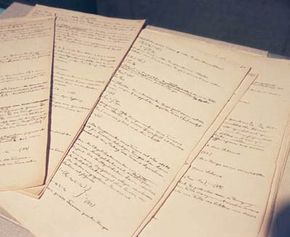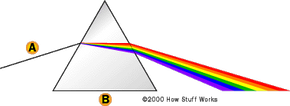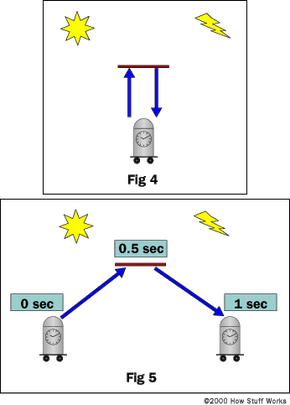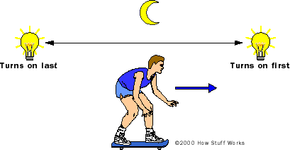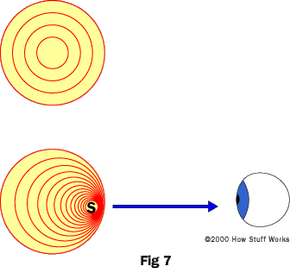If you want to describe the universe as we know it in its most basic terms, you could say that it consists of a handful of properties. We are all familiar with these properties - so familiar, in fact, that we take them completely for granted. However, under special relativity many of these properties behave in very unexpected ways! Let's review the fundamental properties of the universe so that we are clear about them.
Space
Space is the three dimensional representation of everything we observe and everything that occurs. Space allows objects to have lengths in the left/right, up/down, and forward/backward directions.
Time
Time is a fourth dimension. In normal life, time is a tool we use to measure the procession of events of space. But time is something more. Yes, we use time as a "tool", but time is essential for our physical existence. Space and time when used to describe events can't be clearly separated. Therefore, space and time are woven together in a symbiotic manner. Having one without the other has no meaning in our physical world. To be redundant, without space, time would be useless to us and without time, space would be useless to us. This mutual dependence is known as the Spacetime Continuum. It means that any occurrence in our universe is an event of Space and Time. In Special Relativity, spacetime does not require the notion of a universal time component. The time component for events that are viewed by people in motion with respect to each other will be different. As you will see later, spacetime is the death of the concept of simultaneity.
Matter
Matter in the most fundamental definition is anything that takes up space. Any object you can see, touch, or move by applying a force is matter. Most people probably remember from school that matter is made up of millions of billions of tightly packed atoms. Water, for example, is the compound H2O, meaning two hydrogen atoms combined with one oxygen atom forms one molecule of water.
To fully understand matter let's look at the atom. It is now generally accepted that atoms are made up of three particles called neutrons, protons, and electrons. The neutrons and protons are found in the nucleus (center) of the atom and the electrons reside in a shell surrounding the nucleus. Neutrons are heavy particles, but they have no charge - they are neutral. Protons are also heavy particles and they have a positive charge. Electrons are light particles and they are negatively charged. There are many important features that arise from considering the number of these particles in each atom. For example, the number of protons an atom has will determine the atom's place on the periodic table, and it will determine how the atom behaves in the physical universe. (See the HSW article entitled "How Nuclear Radiation Works" for a further discussion of atoms and subatomic particles.)
Motion
Anything that is in the act of changing its location in space is said to be in motion. As you will see later, consideration of "motion" allows for or causes some very interesting concepts.
In the next section we'll look at mass and energy.
